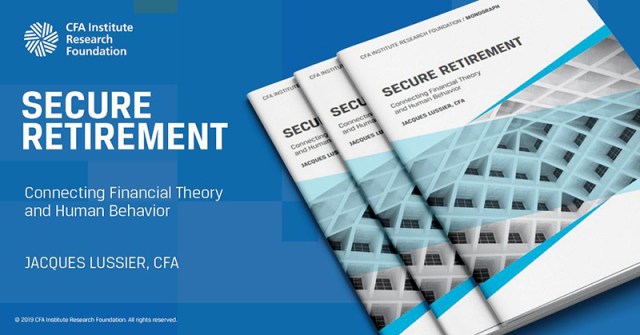[ad_1]
This article is the first in my new Letters to Tony series. Tony is a client of mine who owns a barbershop in New Jersey. The goal of these letters is to do what too often advisers fail to do: Explain investment topics in simple, no-nonsense language.
Dear Tony:
Investment clients sometimes worry about
getting ripped off, so here is my perspective about fees.
I hope you find this useful.
Rob
My dad was a probation officer in New York City, and he saw all types of crime: white collar, blue collar, and no collar. Dad had an ashtray with an an old Italian proverb that says:
“A rubar poco si va in galera,
“a rubar tanto si fa cariera.”
In English, this translates to:
“Steal a little and you go to jail;
“steal a lot and it’s a career.”
After 34 years in finance, I’ve seen all kinds of theft: scams, fraud, cheating, deception, double-dealing, and embezzlement. I’ve seen commissions that are outrageously high, and that’s wrong even when it’s legal.
Disclaimers and Disclosures
What makes deception legal in finance? Disclaimers. If a company discloses its fees and commissions, it can’t be convicted of stealing from you. That’s one reason why banks, brokers, and insurance companies have such long disclaimers.
A mutual fund executive once told me:
“Disclosures don’t prevent fraud; disclosures perpetuate fraud.”
In other words, when big companies bury you with fine print, they don’t prevent deception. The fine print facilitates deception.
What Is a Fair Price for Advice?
Like most advisers, I charge a fee based on assets under management (AUM). My fee is 1% of assets, with discounts for large relationships. I have about $4 million in AUM, so my business grosses about $40,000 per year.
One thing’s for sure: I’m not getting rich by ripping people off.
Fiduciaries have costs.
Like you, I run a licensed business, and regulations make life more complex and expensive.
This year, I will spend about $1,800 on compliance costs, $1,200 for accounting, $900 for insurance, and $600 on professional licenses. And I have to keep $10,000 on deposit at the bank, which ties up my money. Like any business, I have to pass these costs on to my clients.
Fortunately, I’m in the process of moving to a fully digital platform. When that process is complete, I’ll have a more streamlined service that will cut costs, help my firm grow, and reduce fees for clients.
Yes, I am well aware that you can get investment advice for less money at other firms. I am competing with Vanguard, Charles Schwab, and many others. And if you want, you can always manage your investments yourself.
So you might ask, Why does anyone pay an investment adviser? Here’s how I see it:
Four Reasons Clients Want a Human Pilot
- Expertise: When there is a financial storm, investors want a pilot, not an autopilot. Clients want a person who actually understands what’s going on and who can explain it in plain English. Investors aren’t born knowing the benefits of diversification or the nuances of financial planning, much less the details of economics. Yes, you can just do a Google search. But that doesn’t help if you don’t know what questions to ask. (When my son has a fever, I don’t just look at WebMD — I call a doctor.) It also takes expertise to read financial news, especially since the media often prey on the fears and emotions of readers.
- Action: Clients want a pilot, not a pundit. Airline pilots understand what’s going on during a storm and they can do something about it. Likewise, when a financial crisis hits, an adviser can take action immediately. In addition, both advisers and airline pilots are accountable for results. A pundit, however, may just talk the talk: They won’t suffer any consequences for being wrong. Pundits often sound like Monday-morning quarterbacks, bragging “I told you so” after the market crashes. Human advisers are like pilots: We have skin in the game, and we are accountable for mistakes.
- Convenience: Some clients prefer to delegate financial responsibility to someone else. My clients like to get a person on the phone, not a phone tree, and they want to speak with an experienced investor. They want answers to questions, not a website with a list of articles that might help.
- Customization: My clients want a holistic approach that is tailored to their situation. They want a portfolio that adapts as the market changes and as their personal circumstances evolve. This type of customization is the opposite of automation and standardization.
The future of fees is lower.
Automation certainly can cut costs and simplify life for investors and advisers alike, and this will eventually lead to lower fees and better service across the board.
Unfortunately, I also believe that investment returns will be low in the decade ahead. As a consequence, investors will shift to less-expensive forms of financial advice, whether it’s automation, subscriptions, or low-fee advisers.
Paid Advice Isn’t Theft. But It Can Prevent Theft.
At the end of the day, Tony, it’s your call. You pay an adviser or not.
But you should know that paid advice isn’t theft. And having an adviser look out for you can prevent problems down the line. It’s good to have somebody looking out for you.
Here’s how I’d say it in Italian:
“Paga un poco ‘e sii libero dalle preoccupazioni
“Ricevilo gratuitament e sii libero di preoccuparti.”
In English, this translates to:
“Pay a little and be free from worry.
“Get it for free and be free to worry.”
Additional Reading
If you liked this post, don’t forget to subscribe to the Enterprising Investor.
All posts are the opinion of the author. As such, they should not be construed as investment advice, nor do the opinions expressed necessarily reflect the views of CFA Institute or the author’s employer.
Image credit: ©Getty Images/Towfiqu Photography
Professional Learning for CFA Institute Members
CFA Institute members are empowered to self-determine and self-report professional learning (PL) credits earned, including content on Enterprising Investor. Members can record credits easily using their online PL tracker.
[ad_2]
Image and article originally from blogs.cfainstitute.org. Read the original article here.


